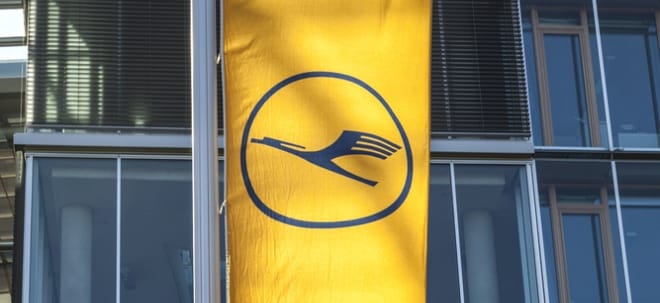EQS-News: Soligenix Issues Interim Results For CTCL Treatment Trial 75% Response At 18 Weeks, 3 Patients Achieve Complete Response
Werte in diesem Artikel
|
EQS-News: Benzinga
/ Key word(s): Healthcare
Werbung Werbung By JE Insights, Benzinga DETROIT, MICHIGAN - May 5, 2025 (NEWMEDIAWIRE) - Late-stage biopharmaceutical company Soligenix, Inc. (NASDAQ: SNGX) focuses on developing treatments for rare and underserved diseases. Primarily, the firm specializes in providing groundbreaking treatments for critical conditions with few effective options. Among its most promising lead programs is HyBryteTM, which targets cutaneous T-cell lymphoma (CTCL) – a chronic, difficult-to-treat skin cancer.  With no approved frontline therapies currently available, HyBryte’s potential to fill this much-needed gap has drawn growing attention. Recently, Soligenix released interim results from a real-world study funded by the U.S. Food and Drug Administration (FDA). The results reinforce earlier late-stage clinical data and further position HyBryte as a relevant first-line treatment. Werbung Werbung Decoding The Architecture Of HyBryte And Its Key Indication Developed as a topical drug, HyBryte’s main indication or its treatment focus is CTCL, a rare, chronic cancer where malignant T-cells migrate to the skin and cause lesions. According to the Mayo Clinic, CTCL is a type of non-Hodgkin lymphoma. Often, the cause of the condition – which results in a growth of cells in the skin – isn’t known. However, demographic risk factors include being over the age of 50, though the condition can happen at any time. In terms of numbers, CTCL affects around 31,000 people in the U.S. and approximately 38,000 people in Europe. For patients, the high unmet need represents a significant burden. Simultaneously, though, the limited competition creates an opportunity for a disruptive innovation, especially one that involves the potential to transition to broad, home-use applications. A key concern about CTCL is that it often resembles the more common and manageable conditions of psoriasis or eczema initially. Nevertheless, over time, CTCL can worsen, forming patches, plaques or tumors. As stated earlier, it's part of non-Hodgkin lymphoma. Unlike most lymphomas, though, it doesn’t stay in the blood; rather, it shows up and remains in the skin. Werbung Werbung While the characteristics of CTCL might sound tolerable relative to aggressive cancers, the sad reality for CTCL patients is that the right treatment solutions can be difficult to find across the disease’s progressive spectrum. This is particularly true for early-stage patients who are stuck cycling between suboptimal treatments. At the moment, no FDA-approved frontline treatment exists that’s specifically designed for early-stage CTCL. It’s this vacuum that Soligenix is attempting to fill with HyBryte. As a topical, localized treatment with a benign safety profile, the company says the solution demonstrates strong, early responses – without the baggage of ineffective treatments or, in the worst case, carcinogenic risks tied to chemotherapy for advanced disease stages. Soligenix says it was able to deliver this groundbreaking treatment thanks to the unique structure of HyBryte. Using a synthetic molecule called hypericin that becomes active only when hit with visible light (red-yellow spectrum), HyBryte – which is applied as an ointment or gel – leverages safe fluorescent or LED light to trigger a local reaction that kills cancerous T-cells. As a non-chemo alternative, HyBryte delivers results without the use of harmful UV light, thereby introducing no systemic toxicity and no DNA damage, the company stated. Essentially, the treatment provides cancer-fighting power without straining the body, a typical consequence of traditional oncological solutions. What has added further clinical intrigue toward HyBryte is, as stated earlier, the lack of an approved frontline treatment for CTCL. Upon diagnosis, it’s not unusual for medical practitioners to throw a cocktail of various treatment options at patients, including steroids, UV therapy, chemotherapy or nitrogen mustard. As one can imagine, all the common treatments for CTCL carry risks: UV light raises melanoma risk, chemo can wreak havoc on the immune system and nitrogen mustard is effectively a close cousin of chemical warfare agents. Adding to the frustration of the regimen is its rotational cycle: most CTCL treatments are only approved after something else has failed. Not only that, learning the true efficacy of a treatment may take six to 12 months – if it works at all. Sadly, CTCL patients are often stuck waiting, relapsing or suffering side effects. Fortunately, this is the centerpiece attribute of HyBryte: Soligenix reports that the topical solution starts working within 18 weeks and has demonstrated no serious safety issues across multiple studies. Delivering Tangible Results In Real-World Settings Before advancing to large-scale trials, early-stage data confirmed HyBryte’s safety profile and provided a statistically significant efficacy signal in phase 2 testing. The results offered enough traction to justify a full phase 3 effort, targeting early-stage CTCL patients where treatment options remain fragmented and largely unsatisfactory. That next step came with the FLASH trial, which enrolled 166 patients and delivered a 49% response rate among those completing cycled treatment in a full 18-week protocol. Based on those outcomes, regulators called for a second confirmatory study – FLASH2 – which is now underway. Structured as a continuous 18-week treatment period without cycle breaks, the trial mirrors the timeframe where HyBryte previously showed its strongest results. Even more significantly, a “real-world” study – conducted under conditions that are more aligned with standard medical practice and supported by a $2.6 million FDA Orphan Products Development Grant – led by Dr. Ellen Kim at the University of Pennsylvania (UPENN) – now offers the brightest signal yet regarding HyBryte’s potential. Beyond the confines of traditional trials, the study, which is known as RW-HPN-MF-01, includes scenarios for potential long-term at-home use. Overall, up to 54 weeks of treatment were planned. So far, the results have been encouraging, with HyBryte delivering a 75% response rate at 18 weeks, and with CTCL patients enrolled in the study witnessing more than 50% lesion reduction. Furthermore, three patients achieved a complete response from the treatment. All told, among patients completing the full 54 weeks, the average maximum improvement rate stood at 85%. Just as well, researchers reported no serious safety issues. Combined with the corroboration of other late-stage clinical results, the latest data further advances HyBryte as a potential solution for CTCL. Redefining The Starting Line In CTCL Treatment With limited treatment options and no established front-line standard, early-stage CTCL remains a persistent clinical challenge. Soligenix, through its HyBryte program, is targeting this gap head-on with a therapy designed to deliver localized impact without systemic compromise. The drug’s activation mechanism – combining synthetic hypericin with visible light – offers a promising alternative to the rotation of steroids, UV therapies and toxic topicals that currently define patient care. Interim results from the FDA-funded real-world study reinforce what prior trials have already suggested: HyBryte seems to deliver meaningful, measurable responses within a relatively short treatment window. With a favorable safety profile and the added convenience of home-use potential, the therapy could shift how early-stage CTCL is managed, especially for patients looking to avoid the trade-offs of more aggressive regimens. As FLASH2 enrollment progresses, the path forward remains tied to data, but the foundation is already in place, as the company says the FLASH2 study is replicating what the UPENN continuous treatment study has already demonstrated at 18 weeks. With continued validation, HyBryte could represent more than just a novel therapy - it may even reset the standard. Featured image by fernando zhiminaicela from Pixabay. This post contains sponsored content. This content is for informational purposes only and is not intended to be investing advice. This content was originally published on Benzinga. Read further disclosures here. View the original release on www.newmediawire.com News Source: Benzinga
05.05.2025 CET/CEST Dissemination of a Corporate News, transmitted by EQS News - a service of EQS Group. |
| Language: | English |
| Company: | Benzinga |
| United States | |
| ISIN: | US8342236044 |
| EQS News ID: | 2130234 |
| End of News | EQS News Service |
|
|
2130234 05.05.2025 CET/CEST
Übrigens: Soligenix und andere US-Aktien sind bei finanzen.net ZERO sogar bis 23 Uhr handelbar (ohne Ordergebühren, zzgl. Spreads). Jetzt kostenlos Depot eröffnen und als Geschenk eine Gratisaktie erhalten.
Ausgewählte Hebelprodukte auf Soligenix
Mit Knock-outs können spekulative Anleger überproportional an Kursbewegungen partizipieren. Wählen Sie einfach den gewünschten Hebel und wir zeigen Ihnen passende Open-End Produkte auf Soligenix
Der Hebel muss zwischen 2 und 20 liegen
| Name | Hebel | KO | Emittent |
|---|
| Name | Hebel | KO | Emittent |
|---|
Nachrichten zu Soligenix Inc Registered Shs
Analysen zu Soligenix Inc Registered Shs
Keine Analysen gefunden.

